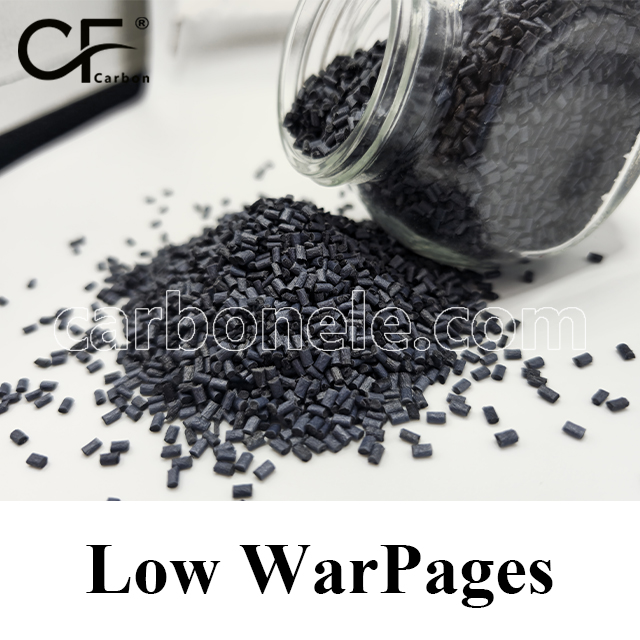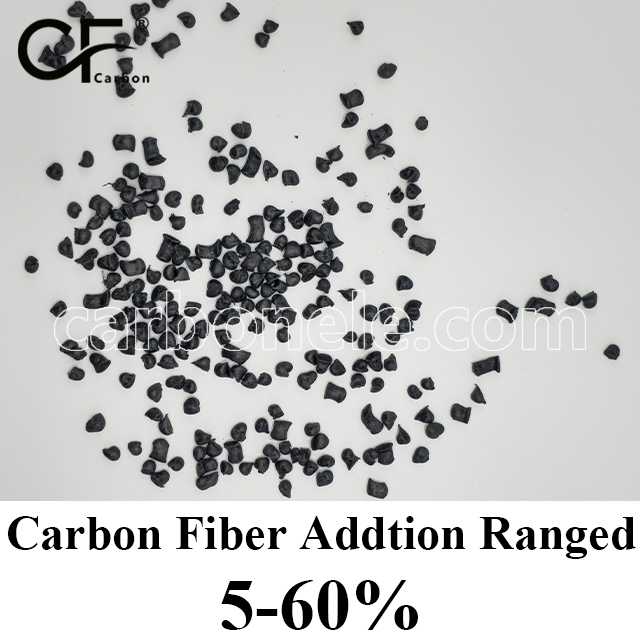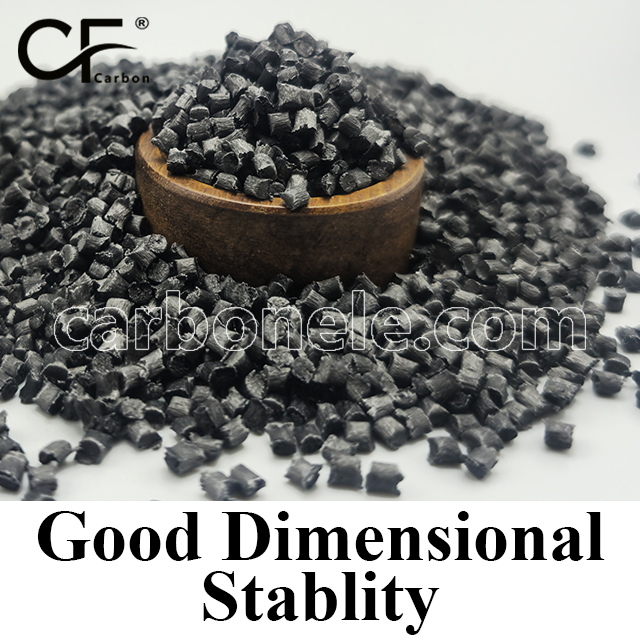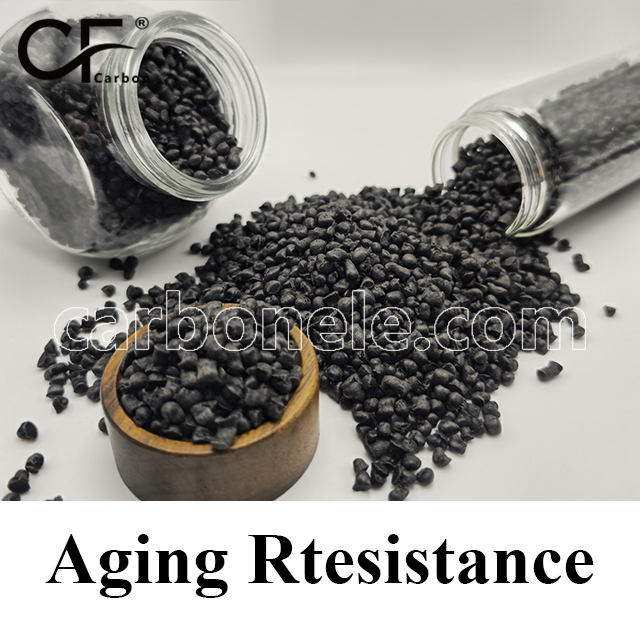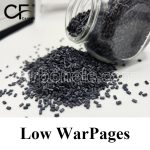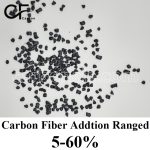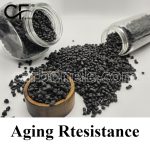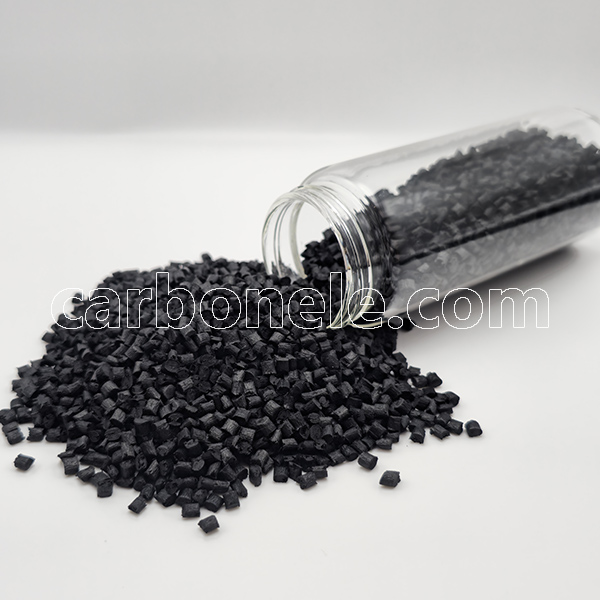
PA12-CF20 for gears and bushings
- Model number: PA12-CF-BCA2
- Matrix Resin: Polyamide12 (Nylon12) (PA12)
- Reinforcing Filler: Carbon fiber
- Appearance: Granules
- Grade: Injection/extrusion grade
- Packaging: 25kgs/bag
PA12-CF20 | 20% Carbon Fiber Reinforced Polyamide 12
PA12-CF20 is a high-performance engineering thermoplastic that synergizes the low moisture absorption, chemical resistance, and flexibility of Polyamide 12 (PA12) with a robust 20% carbon fiber reinforcement. This composite material delivers a powerful combination of high strength, stiffness, impact toughness, and outstanding dimensional stability, making it an optimal choice for high demand applications across the automotive, aerospace, industrial machinery, electronics, and consumer goods sectors.
The elevated carbon fiber content creates a dense internal reinforcement structure, significantly boosting mechanical load capacity, dimensional precision, thermal endurance, and fatigue resistance — all while maintaining a lightweight profile and good processability. PA12-CF20 serves as a strong, lightweight alternative to metals and traditional thermoplastics in structural and semi structural components.
Key Material Benefits
Mechanical Reinforcement
Carbon Fiber Content: 20%
High-density carbon fiber network dramatically increases mechanical properties without excessive processing challenges.
Tensile Strength: ≥ 105 MPa
Withstands heavy tensile forces, ensuring durability and reliability under both static loads and repeated mechanical stresses.
Flexural Strength: ≥ 140 MPa
Superior resistance to bending deformation, supporting applications requiring rigid support under mechanical load.
Impact Strength: ≥ 10 kJ/m²
Maintains excellent shock resistance even with increased stiffness, critical for structural components exposed to impact and vibration.
Thermal Stability
Heat Deflection Temperature (HDT): ~170°C
Outstanding thermal endurance, enabling usage near engines, heaters, and other high temperature zones.
Continuous Service Temperature: Up to 100°C
Reliable long-term performance even in elevated temperature environments across automotive, industrial, and aerospace applications.
Environmental and Chemical Resistance
Low Moisture Absorption:
Reinforced PA12 inherently resists water uptake, and with carbon fiber, PA12-CF20 offers exceptional dimensional stability even under fluctuating humidity and temperature conditions.
Chemical Compatibility:
Excellent resistance to:
Automotive fluids (oils, greases, fuels)
Industrial solvents
Mild acids and bases
Suitable for harsh chemical environments, including automotive, aerospace, and industrial applications.
Processing and Production
Processing Methods:
Fully compatible with injection molding and extrusion, enabling efficient production of complex geometries with high precision.
Flow Behavior:
Despite higher fiber content, PA12-CF20 maintains good melt flow, facilitating thin wall and intricate part designs.
Tooling Considerations:
Use abrasion resistant tooling; optimize melt temperatures and injection speeds to maintain fiber length and maximize mechanical performance.
Key Applications Across Industries
Automotive:
High load engine brackets and housings
Lightweight structural supports
Heat and chemical resistant under hood components
→ Reduces vehicle weight while delivering superior strength and thermal performance.
Aerospace:
Lightweight, fatigue resistant structures
Structural frames for avionics and equipment enclosures
→ Critical weight savings and thermal stability for aerospace innovations.
Industrial Machinery:
Wear resistant gears, bearings, bushings
High load conveyor rollers and guide rails
→ Superior wear resistance and dimensional precision under heavy mechanical cycles.
Consumer & Sports Equipment:
Lightweight, impact resistant sports frames
Durable housings for rugged consumer electronics and tools
→ Perfect balance between toughness, lightweight, and design flexibility.
Electronics & Electrical:
Structural housings for automotive and industrial electronics
Frames for ruggedized, high temperature devices
→ Withstands mechanical stresses and thermal cycling in demanding environments.
Performance Summary Table
| Property | Value / Description |
|---|---|
| Carbon Fiber Content | 20% (Short Carbon Fiber) |
| Tensile Strength | ≥ 105 MPa |
| Flexural Strength | ≥ 140 MPa |
| Notched Impact Strength | ≥ 10 kJ/m² |
| Heat Deflection Temperature | Approx. 170°C |
| Long Term Service Temperature | Up to 100°C |
| Water Absorption | Very low – excellent dimensional stability |
| Chemical Resistance | Excellent – oils, fuels, solvents |
| Wear Resistance | Very high – ideal for sliding and structural parts |
| Processing Methods | Injection molding, extrusion |
| Surface Finish | Smooth – minimal warpage, high surface quality |
| Dimensional Stability | Outstanding – minimal shrinkage and moisture uptake |
If you want to get more information about PA12-CF20, you can vist our Youtube.
Thermal Stability of PA12-CF
PA12-CF composites exhibit significantly enhanced thermal stability compared to standard PA12 due to the incorporation of carbon fiber. As the carbon fiber content increases, the material's ability to withstand elevated temperatures improves, allowing it to maintain mechanical properties in high-temperature environments. This enhanced heat deflection temperature makes PA12-CF suitable for applications that require reliable performance under thermal stress. The superior thermal stability ensures that components made from PA12-CF can operate effectively in demanding conditions, thereby expanding their usability across various industries, including automotive and aerospace. The combination of lightweight characteristics and improved heat resistance positions PA12-CF as an excellent choice for applications that prioritize both strength and thermal performance.
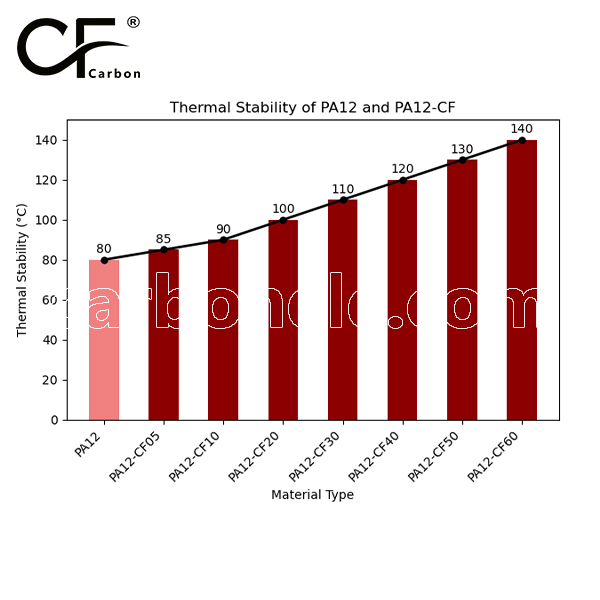
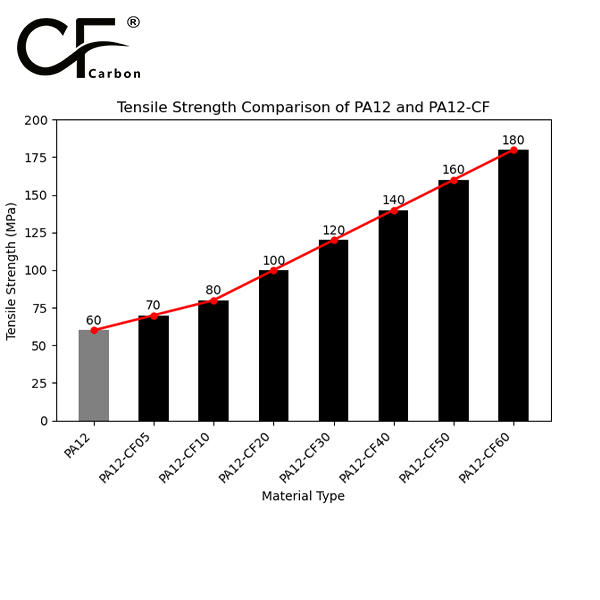

Frequently Asked Questions
Carbon (Xiamen) New Material Co., Ltd. aims to provide buyers with "one-stop" worry-free high-quality services. Here you can find all information about carbon fiber engineering plastics. If you still have questions, please send us an email for consultation!
-
How can I contact the manufacturer of a product that interests me?
When you find a product you are interested in, you can contact the manufacturer directly by sending an email and we will get back to you as soon as possible.
-
How do I find the products that interest me?
All you need to do is enter the keyword, product name in the search window and press the Enter key on your keyboard. Your search results page will then be displayed. You can also search within the product category pages on the home page. Each category is divided into subcategories, allowing you to refine your search and find products that interest you.
-
Where will I find a buying guide?
Please contact our after-sales service directly and we will provide you with a comprehensive operating guide.
-
What are CF Reinforced Thermoplastic Composites?
CF Reinforced Thermoplastic Composites are materials where carbon fibers are incorporated into a thermoplastic matrix. They combine the strength and stiffness of carbon fibers with the processability and recyclability of thermoplastics. For instance, they are used in automotive parts like bumper beams.
-
What are the benefits of CF Reinforced Thermoplastic Composites over traditional composites?
The key benefits include faster production cycles, easier recyclability, and better impact resistance. They also offer design flexibility. An example is in the manufacturing of consumer electronics casings where complex shapes can be achieved more easily.
-
How are CF Reinforced Thermoplastic Composites processed?
Common processing methods include injection molding, extrusion, and compression molding. Injection molding is widely used for mass production. For example, in the production of small components for the medical industry.
-
What industries use CF Reinforced Thermoplastic Composites?
They are utilized in aerospace, automotive, medical, and sports equipment industries. In aerospace, they can be found in interior components. In the medical field, they might be used in prosthetics.
-
How does the carbon fiber content affect the properties of the composites?
Higher carbon fiber content generally leads to increased strength and stiffness but may reduce ductility. A moderate content is often balanced for specific applications. For example, a higher content might be preferred in structural parts of a race car.
-
What are the challenges in using CF Reinforced Thermoplastic Composites?
Challenges include higher material costs, complex processing equipment requirements, and ensuring uniform fiber dispersion. Issues with adhesion between the fibers and the matrix can also arise. An example is in achieving consistent quality in large-scale production.








